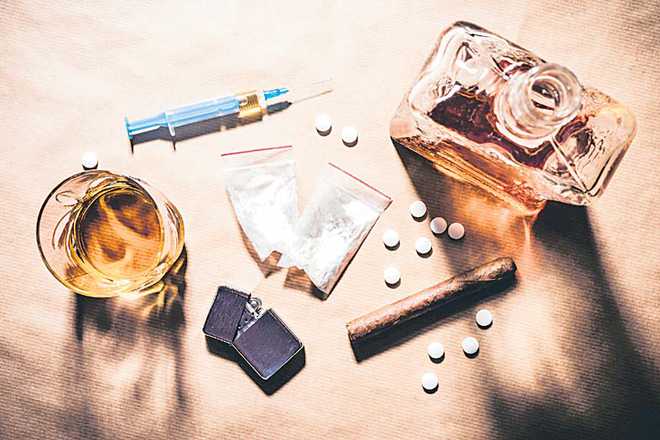
Substance Abuser: Of dark web and Kashmir’s dark underbelly
A study conducted by the Institute of Mental Health and Neuro Sciences in Kashmir (IMHANS-K) has revealed that during the COVID-19 pandemic, substance abusers in Kashmir purchased drugs using the dark web.
As per the study ‘Prevalence and Pattern of Substance Use in 10 districts of Kashmir: A 2022 survey’ conducted by IMHANS-K, the sales of drugs on darknet websites comprise only a small number of overall sales of drugs, but they increased evidently after COVID-19.
“The COVID-19 pandemic created a shift by accelerating e-commerce and leading to a major leap from offline to online shopping. This trend has also encompassed the purchase of illicit drugs. While some illicit drugs are sold on the ‘clear web’, illicit drugs are available on the ‘dark web,’” the study revealed.
According to the study, “People who use drugs have purchased drugs through these sites during COVID-19 lockdown.”
Dr Yasir Hassan Rather of the Institute of Mental Health and Neurosciences (IMHANS) told that the purchase of drugs using the dark web increased during the COVID-19 pandemic.
He said that people who procure drugs online were adolescents and students, especially those who were tech-savvy.
“Mostly party drugs like lysergic acid diethylamide (LSD), methamphetamine (METH), MDMA and ecstasy, and other drugs are being used by them. Even the youngsters get illicit drugs like heroin through the dark web,” Dr Rather said.
He said that on the dark web, it was difficult to track the IP address of a person who is procuring drugs.
“All the sellers sell these drugs through the dark web,” Dr Rather said. “The seller takes money from them and sends these drugs through a courier. This way, it becomes easy for these students and adolescents to consume the drugs illegally.”
He said that even drug peddlers manage to get party drugs from outside the country.
According to the survey, the drug market overall showed no significant changes as a result of COVID-19 though there was initially a slowdown and global drug production remained largely unaffected throughout 2020.
During the pandemic, in Kashmir, opioids were the primary substance of use (87.6 percent) with heroin (75.8 percent) being the predominant drug of use.
“The majority of users’ pattern of intake increased during the COVID-19 lockdown and they continued to consume substances due to boredom due to the lockdown,” doctors at IMHANS said.
Dr Arshad Hussain of the IMHANS told that society’s dark underbelly was always linked to drug addiction.
“These things are almost replacing the real world. It is becoming a new interface for illegal drug trafficking and hence stretching our resources in our fight against addiction,” he said.
According to Dr Hussain, the dark web would not only change the drug addiction scenario quantitatively but also qualitatively due to the introduction of new psychoactive molecules, making the situation even worse.
Despite the lockdown and restrictions, the Out-Patient Department (OPD) and In-Patient Department (IPD) at IMHANS showed a surge in cases during the pandemic.
“Initially, in the early months of the pandemic, there were limited treatment seekers, but that increased in no time as IMHANS-K was among the few hospitals in north India that had functional outpatient and inpatient departments during the pandemic,” the doctors said.
As per the official data, the number of patients seen in the OPD and IPD of drug addiction services was approximately 500 in 2015, which witnessed a manifold increase in the following years to an extent of approximately 24,000 patients in 2021 and 2022.
A total of 17,768 people were found to be dependent on any substance suggesting that the prevalence of substance dependence was 1.95 percent, and amongst these, 16,389 were opioid dependent.
The total prevalence of opioid dependence was 1.80 percent.
Heroin was the most commonly used opioid in the two districts where the survey was carried out.
The estimated number of injection drug users was 8445 which is 51.33 percent of the opioid-dependent population with a prevalence of 1.80 percent and 91 percent using heroin.

